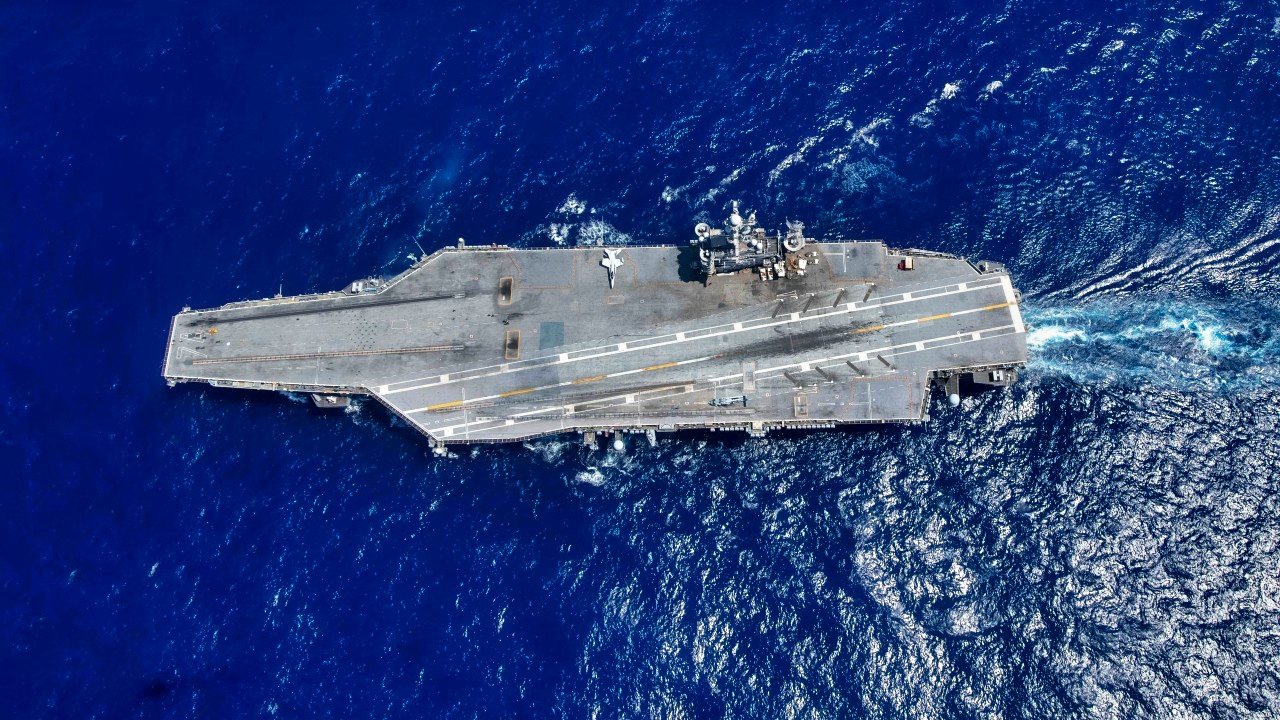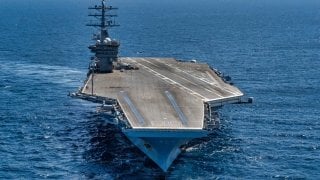Nimitz: The Aircraft Carrier That Made the U.S. Navy a Powerhouse
The USS Nimitz has remained a cornerstone of the U.S. Navy’s sea power for almost five decades. While the lead ship of the Nimitz-class may be aging, she continues to play an important role in supporting U.S. interests abroad.
USS Nimitz profile: For almost five decades, the USS Nimitz has remained a cornerstone of the U.S. Navy’s sea power.
When initially commissioned as CVAN-68, she represented one of the largest warships to ever sail the seas across the globe.
The Navy would later add nine more Nimitz-class aircraft carriers to the fleet over 30-plus years.
While the lead ship of the class may be aging, she continues to play an important role in supporting U.S. interests abroad.
The history of the USS Nimitz:
Named to honor World War II Pacific fleet commander Chester W. Nimitz, the carrier was first authorized by Congress in fiscal year 1967.
Manufacturers Newport News Shipbuilding and Dry Dock Co. in Newport, VA was awarded a whopping $106 million contract to construct the lead ship in this class.
Measuring at more than 1,000 feet in length with a beam of over 290 feet, the Nimitz ships are true behemoths.
In fact, they boast a massive flight deck of over six acres in area. When the class was conceptualized, each ship was designed with increased protection and enhanced defensive armaments to replace the preceding Kitty Hawk class and USS Enterprise.
Since the Nimitz ships are nuclear-powered, they are able to remain at sea for longer periods of time without needing to refuel. Each ship in this class is powered by two A4W reactors which drive four propeller shafts with a maximum of 260,000 horsepower, enabling the boats to travel at speeds in excess of 30 knots. However, the true top speed of the Nimitz ships remains classified. Although these boats are longer than most aircraft carriers, they are not nearly long enough for fully-loaded fighter jets to land and take-off from.
For this reason, a steam catapult is incorporated to help provide lift for heavier airframes when landing and taking off from a short flight deck. In terms of armament, the Nimitz ships are well-loaded.
These aircraft carriers can carry two or three Rim-7 Sea Sparrow or RIM-162 Evolved SeaSparrow Missile Mk 29 missile launchers, in addition to three of our 20mm Phalanx CIWS.
Introducing the USS Nimitz:
Though first commissioned as CVAN-68, aircraft carrier, attack, nuclear powered,” the Nimitz was later redesignated as CVN-68, “aircraft carrier, multi-mission, nuclear-powered.” Nimitz is part of Carrier Strike Group Eleven (CSG-11).
When the hefty shift was first deployed, she sailed the Mediterranean Sea alongside the nuclear-powered cruisers USS California and USS South Carolina. In the 1980’s, the Nimitz sailed toward the coast of Lebanon after Lebanese gunmen hijacked TWA Flight 847. In the 1990’s, Nimitz would report to the Persian Gulf in the aftermath of Operation Desert Storm, where she would primarily be deployed during the subsequent War on Terror.

While the Nimtiz-class ships represented the Navy’s most modern aircraft carriers for nearly half a century, the USS Gerald R. Ford was commissioned as first in a new class of carriers in 2017.
Incorporating cutting-edge technologies and radar systems, the USS Ford is expected to replace the Nimitz as the most formidable carrier class in the waters once each ship is introduced.

About the Author
Maya Carlin, National Security Writer with The National Interest, is an analyst with the Center for Security Policy and a former Anna Sobol Levy Fellow at IDC Herzliya in Israel. She has by-lines in many publications, including The National Interest, Jerusalem Post, and Times of Israel. You can follow her on Twitter: @MayaCarlin.
All images are Creative Commons.


